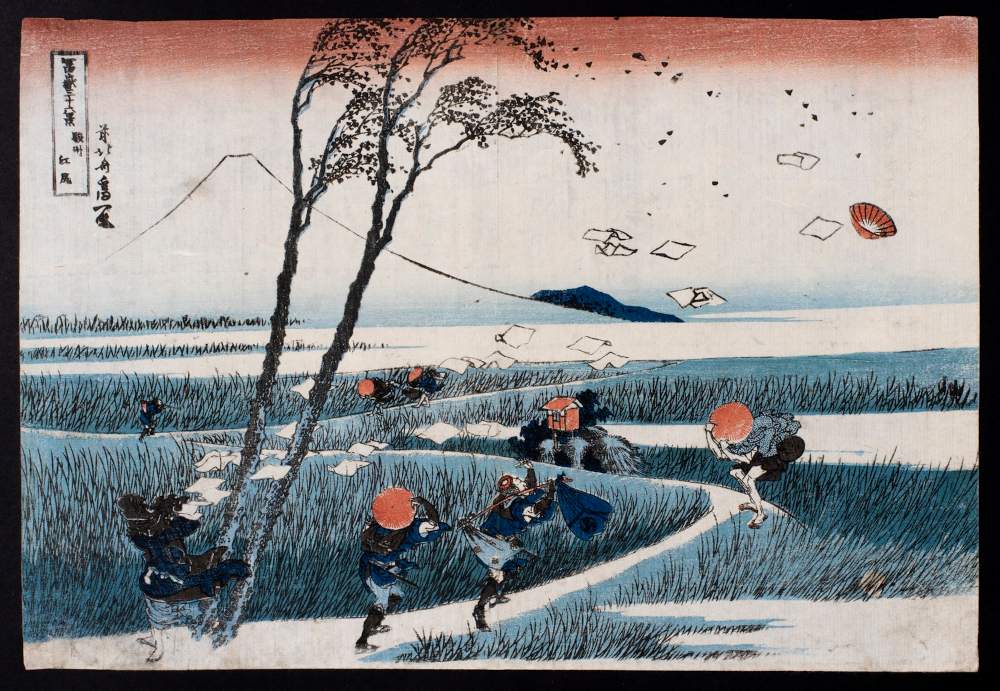An exhibition on Japanese landscapes, from Hokusai to Hiroshige, in Bagnacavallo
Bagnacavallo ’s Museo Civ ico delle Cappuccine welcomes from September 23, 2023 to January 14, 2024 the exhibition ROADS AND STORIES. Landscapes from Hokusai to Hiroshige, curated by Davide Caroli, sponsored by the Municipality of Bagnacavallo and organized by the Museo Civico delle Cappuccine and the Museum of Oriental Art in Venice. The exhibition is part of the three-year program dedicated to Landscape.
The exhibition strand promoted by the Civic Museum on the most important international artists who have masterfully expressed themselves through engraving adds a new stage, moving from Europe to the Far East to tell the story of the ukiyo-e woodcut technique and some of the most important masters who devoted themselves to it: Hokusai and Hiroshige, who also became well known in Europe when some of their works were an inspiration to the Impressionists and more generally to the artists who from the mid-19th century proved more open to the renewal of painting.
Beginning in the 1830s, with the publication of Hokusai’s Thirty-six Views of Fuji and Hiroshige’s Fifty-three Stations of TÅkaidÅ, the depiction of landscape took on a new importance, becoming the main subject of ukiyo-e, the images of the floating world.
The exhibition opens with a room devoted to Katsushika Hokusai. An undisputed master ofJapanese art, Hokusai had enormous success even in his lifetime, especially thanks to some of his most famous series, including the aforementioned Thirty-six Views of Fuji, which are documented here by a selection of the best-known images known, including a version of A Great Wave off Kanagawa, perhaps the world’s best-known ukiyo-e work, which was so beloved and reproduced in such large numbers that it wore out the woodwork and forced publishers to make new wooden matrices on Hokusai’s original drawing in order to pull new originals.
In the following rooms, the narrative focuses mainly on the work of Ando Hiroshige, Japan’s greatest landscape painter, who equaled Hokusai himself in skill and fame, and with whose work an almost direct comparison can be seen thanks to the series also dedicated by him to Japan’s famous iconic volcano. Continuing the tour, in addition to other well-known series by Hiroshige, the main part of the exhibition is devoted to the depiction of TÅkaidÅ : the TÅkaidÅ road, which connected the shÅgun’s capital, Edo, to the emperor’s capital, KyÅto, was the main route of travel and trade in ancient Japan.
For many artists it was the cue to depict views and landscapes celebrating the natural beauty of their country, for Hiroshige himself it was one of the favorite subjects on which he tried his hand several times, even to depict the same stations years apart, and in the exhibition it will be possible to admire several series dedicated to this subject: from the first version in horizontal Åban format, to the vertical one, from the two-brush version to the parallel one.
The exhibition concludes with a room devoted to Hiroshige II, heir of the master and his successor in the Utagawa school.
The nearly 120 works on display, including two important triptychs and a number of original volumes containing the complete series, are flanked by a number of objects: tsuba, inrÅ and a precious kimono decorated with ukiyo-e-inspired images, to emphasize how much landscape imagery influenced Japanese culture through Hiroshige’s work.
The exhibition, realized thanks to the invaluable collaboration of the Museum of Oriental Art in Venice and the loan of generous collectors, is accompanied by a catalog that includes photographs of all the works on display and texts by Davide Caroli, director of the Museo Civico delle Cappuccine in Bagnacavallo; Marta Boscolo Marchi, director of the Museum of Oriental Art in Venice; and Marco Fagioli, among the leading scholars of Japanese printmakers.
Throughout the exhibition period, events will be organized, in collaboration with the Ravenna-based Ascig association, which will allow visitors to explore different aspects of Japanese culture on a regular basis: from specific guided tours dedicated to themes related to the exhibition, to film screenings, to other highly engaging experiences such as the traditional Tea Ceremony.
The exhibition is open to the public on Tuesdays and Wednesdays from 3 to 6 p.m., Thursdays from 10 a.m. to noon and 3 to 6 p.m., and Fridays, Saturdays and Sundays from 10 a.m. to noon and 3 to 7 p.m. Nov. 1, Dec. 8 and Jan. 6 from 10 a.m. to noon and 3 p.m. to 7 p.m.; Sept. 28 to Oct. 1 extended hours from 10 a.m. to noon and 3 p.m. to 11 p.m., Sunday, Oct. 1 from 10 a.m. to 11 p.m. Closed Mondays, Dec. 25 and Jan. 1. Free admission.
For information: www.museocivicobagnacavallo.it
Image: Katsushika Hokusai, Ejiri in Suruga Province, from the series 36 Views of Mount Fuji (c. 1829-1833; polychrome woodcut; private collection)
 |
| An exhibition on Japanese landscapes, from Hokusai to Hiroshige, in Bagnacavallo |
Warning: the translation into English of the original Italian article was created using automatic tools. We undertake to review all articles, but we do not guarantee the total absence of inaccuracies in the translation due to the program. You can find the original by clicking on the ITA button. If you find any mistake,please contact us.





























